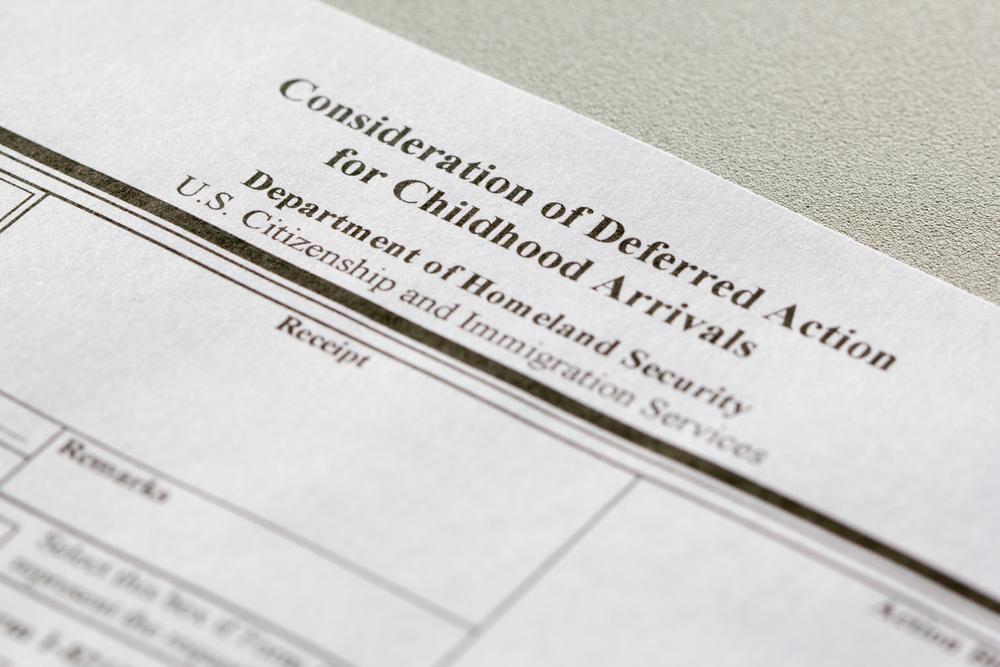What Is The Texas DACA Decision?
In June 2012, President Barack Obama instituted an executive order ensuring undocumented young immigrants who had entered the country as children could move into adulthood in the United States without living in fear of deportation. At the same time, with the government’s approval, they could receive a driver’s license and earn wages through work permits.
President Obama’s order is now recognized as DACA, the acronym for the Deferred Action for Childhood Arrivals, and the young immigrants are now commonly referred to as “DREAMers.” When President Obama first launched DACA, he described the DREAMers as being “…Americans in their heart, in their minds, in every single way but one: on paper.’’

In the last nine years, more than 800,000 undocumented immigrants have benefitted from DACA. Participants do not receive a fast track to citizenship but instead are required to re-apply every two years to keep DACA status. On July 16, a federal judge in Texas declared the program unlawful and issued a permanent injunction vacating the original DACA memo filed under the Obama administration.
In the case, U.S. District Judge Andrew Hanen sided with nine states who accused President Obama of overstepping his authority with the 2012 executive order. In his decision, Judge Hanen said, “As much as this court might agree with these sentiments, and as popular as this program might be, the proper origination point for DACA was, and is, Congress.”
While Judge Hanen did not eliminate the protected status of current enrollees in DACA, he blocked new applications and remanded the issue to the U.S. Department of Homeland Security for “reconsideration.’’
The nine states included in the lawsuit were Texas, Alabama, Arkansas, Kansas, Louisiana, Mississippi, Nebraska, South Carolina and West Virginia.
Reaction from the White House
On his first day in office, President Joe Biden had expressed his concerns about current immigration laws, in particular DACA. He directed Homeland Security to take all actions deemed appropriate and “…consistent with applicable law, to preserve and fortify (DACA).”
After Judge Hanen’s decision, the president was swift in making it clear he would not only have his Justice Department appeal the decision in Texas, but he also urged Congress to move the American Dream and Promise Act, the administration’s key immigration legislation which would incorporate the provisions of DACA into federal law, forward as soon as possible.
The Act has already been approved by the U.S. House of Representatives. However, it is stalled in the U.S. Senate.
In a statement by President Joe Biden on DACA and Legislation for Dreamers, he said, “Only Congress can ensure a permanent solution by granting a path to citizenship for Dreamers that will provide the certainty and stability that these young people need and deserve. I have repeatedly called on Congress to pass the American Dream and Promise Act, and I now renew that call with the greatest urgency. It is my fervent hope that through reconciliation or other means, Congress will finally provide security to all Dreamers, who have lived too long in fear.”
President Trump’s Attempt to Halt DACA
The decision in Texas vs. United States is the second legal decision made concerning DACA in the last 13 months. In June of last year, under President Trump, the Supreme Court also reviewed the validity of DACA. However, the high court upheld DACA by a 5-4 margin.
Writing for the majority in June 2020, Chief Justice John Roberts said administration officials did not provide detailed justifications for canceling DACA, rendering their decision “arbitrary and capricious.”
“We do not decide whether DACA or its rescission are sound policies,” Roberts wrote. “The wisdom of those decisions is none of our concern. Here we address only whether the Administration complied with the procedural requirements in the law that insist on ‘a reasoned explanation for its action.”
Other Slow Downs for New DACA Applicants
While Judge Hanen’s decision will deter the youngest eligible DREAMers a chance to soon receive DACA status, the U.S. Citizenship and Immigration Services, the DHS agency that processes applications, has experienced a backlog in the last several months in processing applications. While the White House recently assigned additional staff to help adjudicate requests through the USCIS, from December 2020 through the end of June 2021, there were about 81,000 backlogged pending DACA applications.
The backlog appears to be a combination of issues in processing that occurred while President Trump attempted to cancel the program in court before leaving office last year.
In an interview for CBS News, USCIS spokesperson Victoria Palmer conceded there was indeed a “significant volume” of applications following the December 2020 court ruling that required the Trump administration to accept initial requests for DACA for the first time since 2017.

















